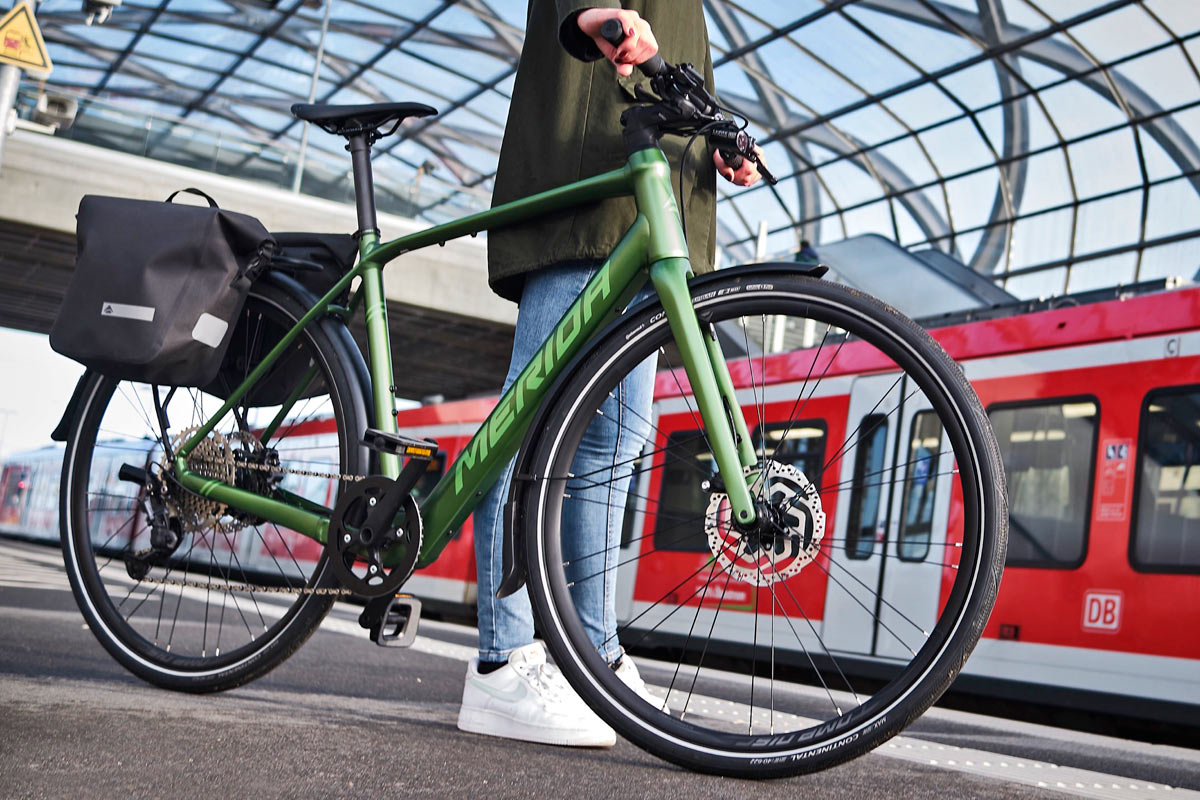Bicycles have enjoyed a renewed spotlight during Covid as mobility darlings. It should come as no surprise then that inventors are focusing closely on how to make bike riding easier and more comfortable for the masses. Enter the pivoting saddle — the cheeky seat, as I like to call it.
The pivoting saddle in this patent actually builds off existing saddles that have been on the market for decades. Two independent ‘plates’ support each sit bone, thereby allowing independent adjustability.
But this pivoting saddle takes the concept a step further by allowing freedom of movement for your thighs as you pedal.
Pivoting saddle basics
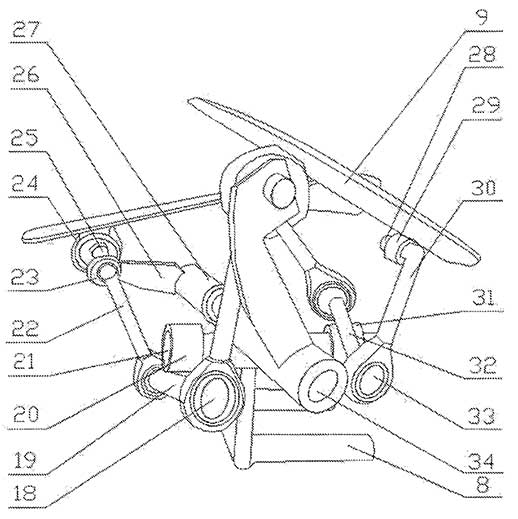
The pivoting saddle features a separate seat plate for each thigh. The patent repeatedly calls this a thigh support. Does that mean the seat plates make contact with your sit bone area, or with the upper part of your thighs? It’s unclear, though it would make more sense to have sit bone support.
Each plate is connected to a series of linkages. These linkages are in turn connected to your seatpost. The linkages allow the pivoting saddle to move as you pedal. Each plate can move independently. For example, when your right foot is in the lowest position of your pedal stroke, the right seat plate will pivot downward, both in the front and the rear of the saddle, to accommodate your leg’s natural movement. Your left saddle plate would maintain its own position to accommodate your left foot’s location in the pedal stroke.
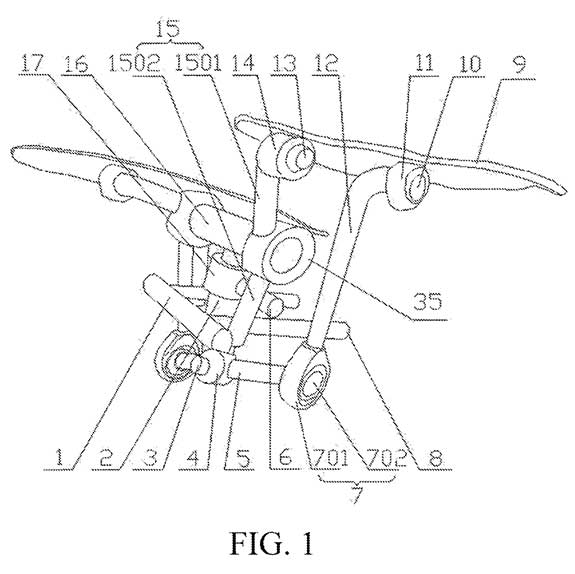
According to the patent, this pivoting saddle design differs from existing designs on the market in one key way. Whereas existing saddles with independent support plates only pivot at the front end of the saddle, this one allows movement both at the front and the rear of each plate. This, according to the patent, should make it easier or the user to pedal, and it should make for a more comfortable experience.
Is the pivoting saddle viable?
About twenty years ago, I remember using a saddle with two independent support plates. They did not pivot the way this saddle does. I found that saddle incredibly uncomfortable for a lot of reasons. But the major reason was that the front of each plate dug into my thighs.
So this pivoting saddle certainly could work. It could indeed provide a more comfortable perch, most likely among the commuter crowd (and that’s what this saddle seems to be aimed at).
That said, the pivoting saddle in this patent seems to be overly complicated, and with all those moving parts, it’s likely the saddle is quite heavy. On top of that, more moving parts equals more maintenance. For the commuter crowd, the weight probably doesn’t matter much; but the added maintenance surely does.
Personally, I would worry that a floating saddle, as this appears to be, would alter my pedal stroke in such ways that injuries or discomfort could become a problem. The pivoting nature of each plate means your saddle height effectively changes with each pedal stroke. That means you could be losing pedaling power depending on the position of the pivoting saddle, and you could be putting undue strain on certain parts of your leg during certain parts of the pedal stroke.
If anything, this patent indicates there are a lot of designers thinking about how to accommodate the growing number of bike commuters on the road.
Extreme labor-saving bicycle
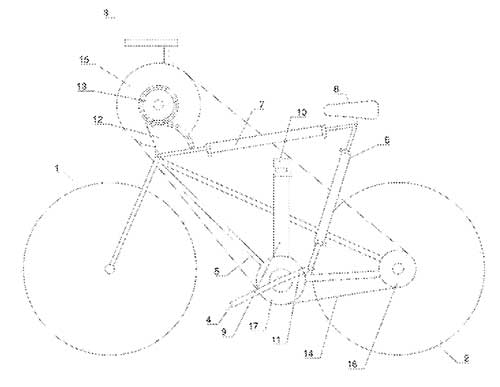
This patent certainly goes big. The idea here is to engage your upper body as well as your lower body to propel the bicycle forward. It also takes advantage of the rider’s weight to create propulsion. That splits the ‘labor’ duties more efficiently so your legs aren’t responsible for all the work.
There’s a lot going on here, and frankly, given how many components get added to the bicycle, and the location of those components, this design isn’t likely to sit well with commuters who often crave simplicity.
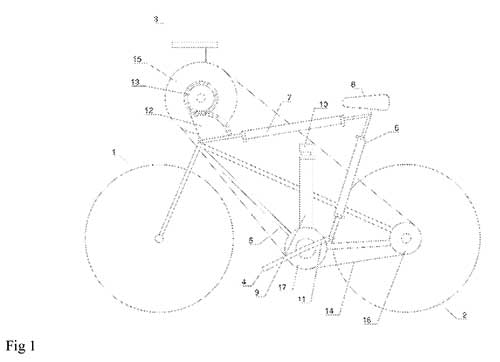
But there are some interesting concepts here. A chain mechanism appears to connect this cockpit device to the rear wheel to create additional drive. The patent outlines a system in which a connecting rod, swinging rod, and the saddle form a lever that activate a fan-shaped gear. The connecting rod and swinging rod appear to both telescope, much like a suspension fork. This means you can actually apply force to the system using your body’s weight resting on the saddle, as well as from activation of the pedal.
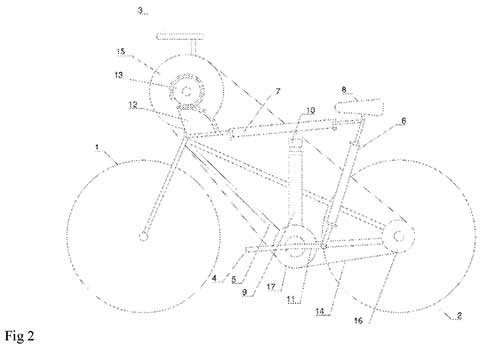
Is it viable?
No, not really. It’s too large and clunky to appeal to, well, just about any bike rider. But there are some interesting concepts here that could be refined to benefit cyclists. Taking some of the burden off your legs to create propulsion could certainly be a boon to commuters (though it has been tried before, to limited success). The problem is, that problem already seems to have been solved. E-bikes accomplish the same thing with a much easier, more intuitive user experience.
Patent research assistance provided by Wheelbased.com. Check them out for deeper dives on some of these patents and more.
